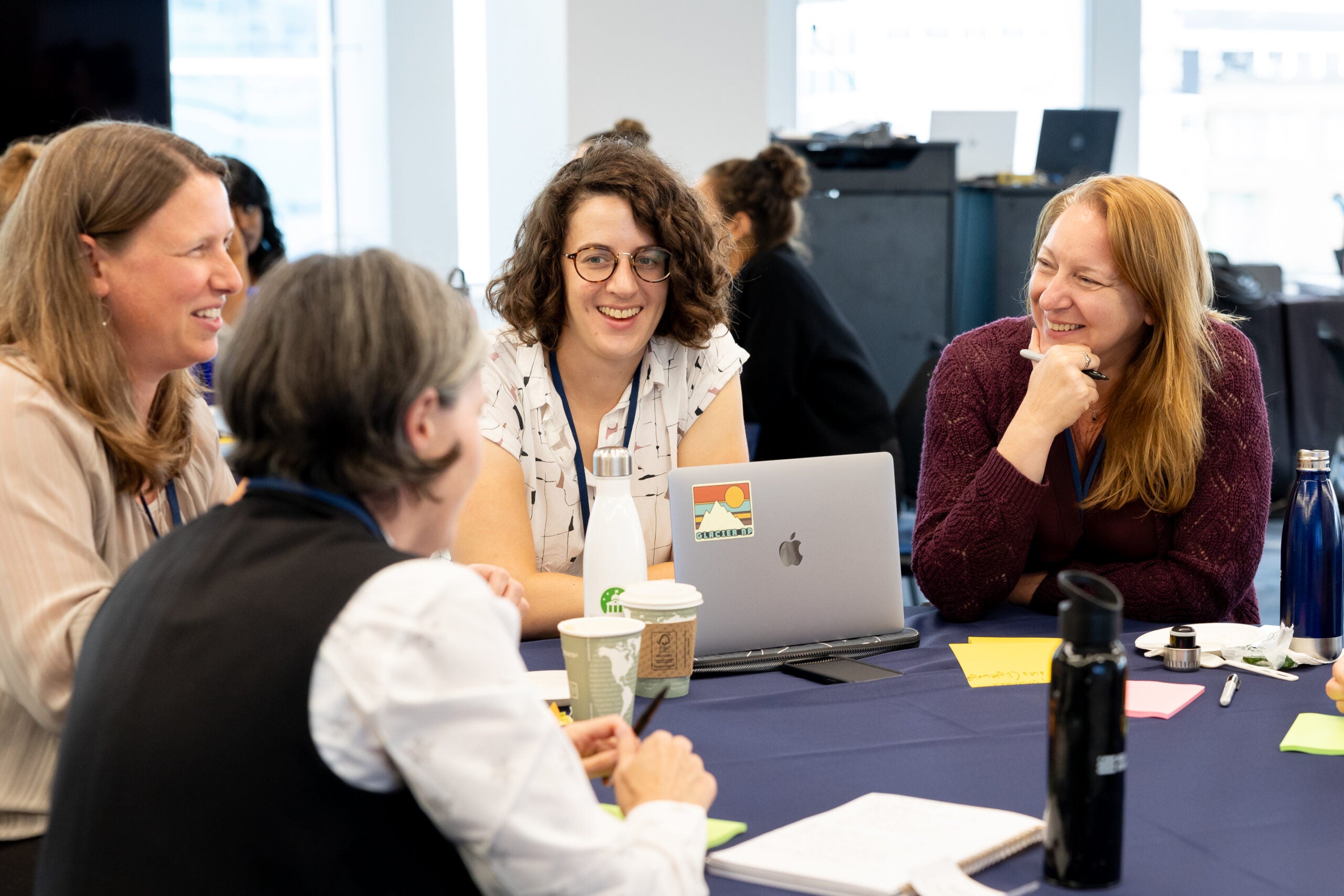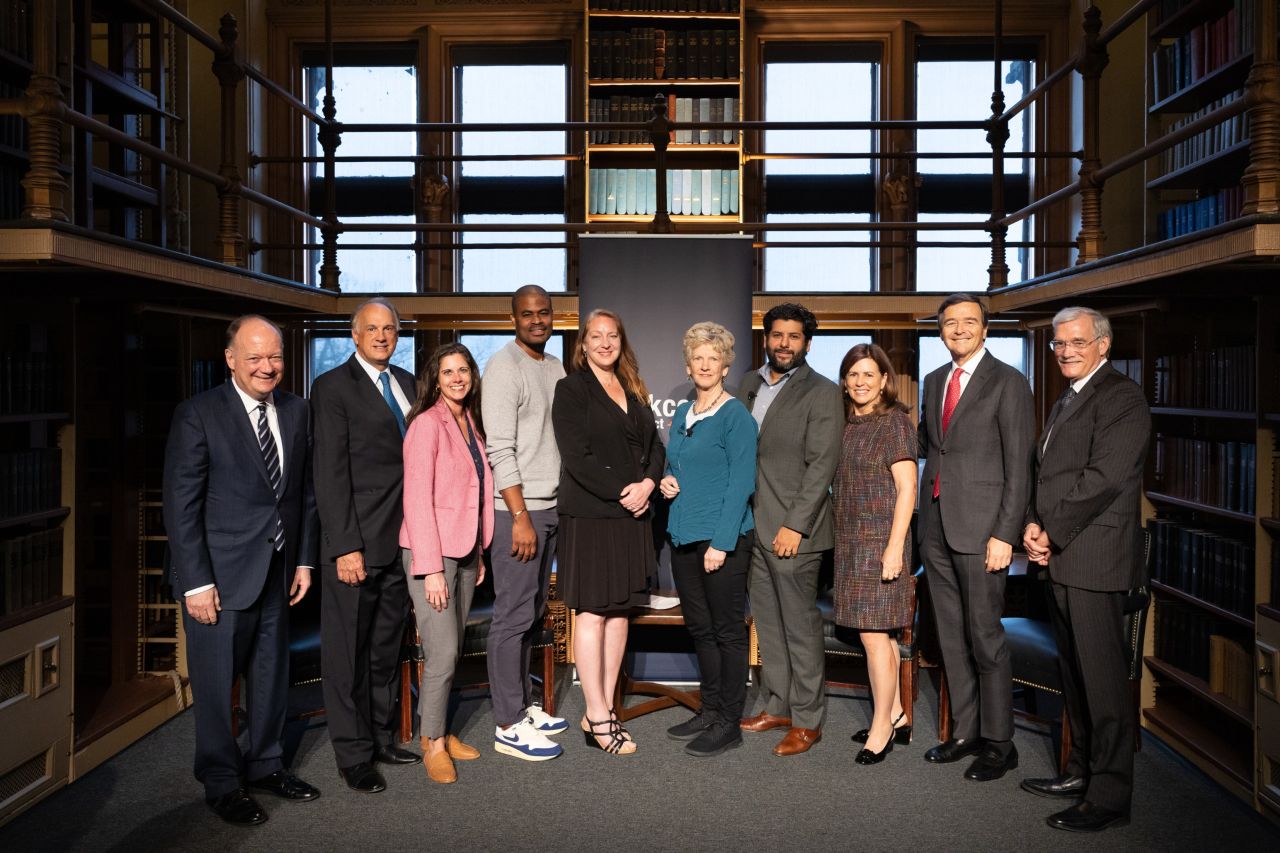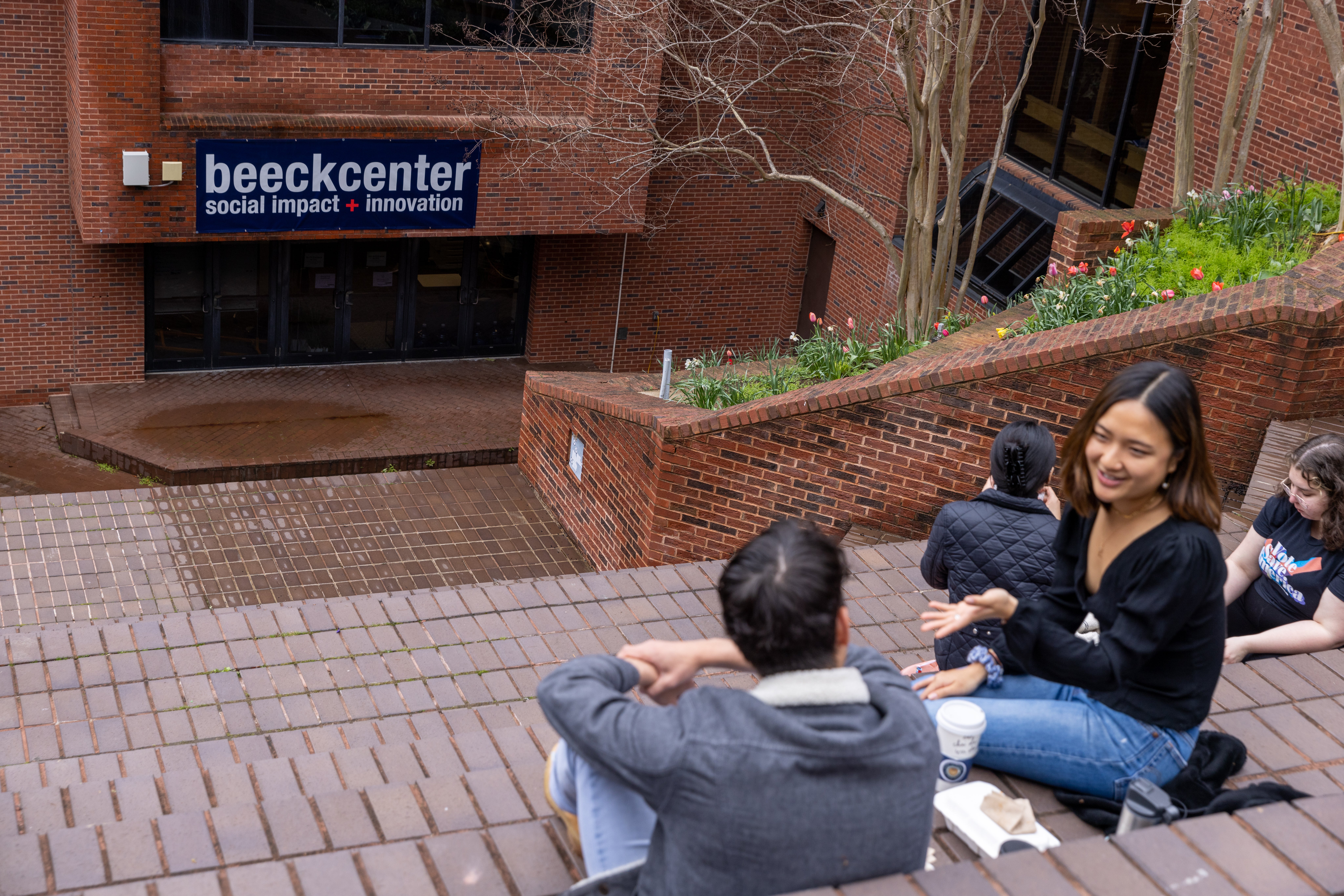A Decade of Impact: How Lynn Overmann’s fight for fairness made her ‘perfectly chosen for the moment’ at the Beeck Center
This is Part III of a three-part series exploring a decade of impact at the Beeck Center. Read Part I and Part II.
One of Lynn Overmann’s most memorable possessions is a snakeskin belt—not because of the way it fits her or the brand name on the label, but because of where she got it: Louisiana State Penitentiary.
In the 90s, Overmann was a young New York University law student interning for the summer with a firm handling death penalty appeal cases. She spent months getting to know clients who were incarcerated on Angola’s death row—interviewing them, reviewing their case information, and helping her bosses prepare their appeals. It was exactly the kind of thing she had gone to law school to do: “take the tools it would provide me with and apply them in the place that felt the most unfair.”
Then one day she got to meet those clients in-person in the most unlikely of settings—a barbecue. The event was created by the prison warden as an incentive for good behavior: an afternoon for people imprisoned on death row to spend time with their family members and enjoy food, games, and a raffle of items they’d handmade—from snakeskin belts to beautifully carved wooden boxes and everything in between.
She remembers the event not just because of the belt, but because of the lesson she learned: human connection is the most valuable thing you can offer someone.
“The litigation is obviously important, but keeping who you are serving at the center of all you do is the hardest and most important part of the job.”
Lynn Overmann
“Your client is your priority; they are your job,” Overmann said. “The litigation is obviously important, but keeping who you are serving at the center of all you do is the hardest and most important part of the job.”
The internship also gave her an unobstructed view into the ways in which government can and does fail the people who need it most. Most often, she learned, the crimes people commit are the result of a lifelong pattern of being underserved by the most crucial systems—education, healthcare, and social services, among others. It was then that Overmann decided to become a public defender.
“You know how little kids have this really strong sense of fairness?” she said. “I just never quite grew out of that.”
Fighting Fair
As a public defender in Miami, Overmann put her sense of fairness to the test on a daily basis. She was constantly faced with the reality that her clients’ legal problems were merely a symptom of a larger, more systemic issue within the public benefits and social services spaces.
One of her juvenile clients, Dell, was the only son of a father who had died in prison. Dell became the recipient of his father’s Social Security benefits, and those benefits helped support his entire family. When Dell, himself, became incarcerated, those benefits were swiftly and abruptly cut off, leaving his family struggling to pay for their basic necessities. And when Dell was released, the benefits were not reinstated with anywhere near the same speed or efficiency.
“I was constantly on the phone with the Social Security Administration or the power company telling them, ‘You have to turn the electricity back on, there’s an infant in the house.’” Overmann said. “It turned out there was a special program to help low income families with their power bills when there were children in the house, but no one ever told them about it. Why are these systems failing at things they’re meant to do? Why did it take a lawyer calling to get them the help they needed?”
These questions guided Overmann into the next phase of her career: pursuing fairness by influencing policy.
She joined the Department of Justice and helped launch the Office for Access to Justice. Later, Overmann served during the Obama Administration as a senior policy advisor to the U.S. chief technology officer in the White House Office of Science and Technology Policy, where she launched the Data Driven Justice Initiative (DDJ). The initiative was born out of a human-centered design workshop that brought together criminal justice practitioners from multiple counties across more than 20 states and asked, “What is the biggest problem that you’re facing that you think data or technology could actually help you solve?” Overmann said.
The overwhelming majority agreed that far too many people with mental illnesses were ending up in their jails, which were severely ill-equipped to handle their needs. To tackle that challenge, DDJ brought together a bipartisan coalition of 140 city, county, and state governments who committed to using data-driven strategies to divert people convicted of low-level offenses who have mental illnesses out of the criminal justice system.

Overmann continued to spearhead DDJ in her subsequent role as vice president of criminal justice at Arnold Ventures, which funded a pilot site initiative to better understand how local governments were coping with this confluence of problems and seek better ways of using the limited resources at their disposal. The pilots showed that the problem did not begin and end with the jails. Police officers were unprepared to respond to calls for service for people experiencing mental health crises, and even when they opted to bring an individual to the hospital instead of arresting them, hospitals were understaffed and similarly undertrained to address the needs of people with mental illnesses.
“We realized that the crisis moment was actually a moment of opportunity, because it was a chance to do something differently,” Overmann said.
Ultimately, governors and state legislators combined block grants for mental health services, housing support, and other social services to support more comprehensive and coordinated care at the local level, utilizing a network of crisis response centers with professionals trained to treat substance use overdoses and to de-escalate people experiencing mental health crises. The initiative was a deep collaboration across federal, state, and local governments that maximized the different policy, funding, and delivery levers across all levels.
Overmann took that experience into her roles as a senior advisor for data and technology in the Biden Administration in the U.S. Department of Agriculture and as a senior advisor for delivery working with the director of the Domestic Policy Council and senior White House leadership on implementation of high-priority domestic policies using data, technology, and human-centered design. She worked on everything from addressing the infant formula crisis to clarifying and streamlining the process to apply for asylum, all the while keeping fairness at the forefront.
“The common thread across these initiatives is that when all levels of government—federal, state, and local—use human-centered design, data, and digital tools and coordinated action to understand and respond to hard problems, we can significantly improve outcomes for the people we serve,” Overmann wrote earlier this year.
Building Better
In 2022 when Cori Zarek transitioned from the Beeck Center for Social Impact + Innovation back into the White House as the deputy administrator of the United States Digital Service, Overmann knew exactly where her pursuit for equity would take her. She had seen the progression of the Beeck Center as it matured into its mission of helping governments serve people’s needs using data, design, and technology, and saw the uncanny alignment in her lifelong commitment to fairness.
“Every leader [the Beeck Center] has had has been perfectly chosen for the moment at hand,” said Georgetown University Provost Robert Groves.
She joined the Beeck Center as executive director in March 2023 to lead a cross-functional, multidisciplinary team of experts dedicated to ensuring that systems work equitably for all.

“If we, collectively, as the civic tech ecosystem, want governments to get better at delivering services, we have to meet governments where they are,” Overmann said. “That’s what [the Beeck Center’s] networks do. That’s what our public resources do. That’s where our superpowers are.”
To Overmann, the future of the Beeck Center, and of the public interest technology movement, must be centered on its ability to work backwards: understanding the needs and experiences of the public in order to understand what government must do to adequately serve them. To meet this goal, there is a crucial role to play for trusted, informed, vendor-neutral organizations in the ecosystem to support governments in agile, responsive ways.
“If you’re pitching a product that helps with front-end integrated benefits interfaces and you’re talking to an agency head, that’s what you’re going to point them toward because that’s what you can deliver,” Overmann said. “Whereas what we can do is talk to the agency head and ask, ‘What do you need? Let us help you figure it out.’”
Now, 10 years after the Beeck Center first opened its doors, what began as an idea in the minds of Olga Maria and Alberto Beeck and Carl Munana to have the greatest impact on the greatest number of people, is now a cornerstone of the Georgetown community, a network catalyst, a research hub, an advocate for modern and equitable policymaking, and a training ground for tomorrow’s innovators.
“How do you have a consistent mission centered on social impact and innovation, but adapt to the environment’s ever-changing definition of what that is?” Provost Groves said. “Getting the institutions of democracy to work better will always, by definition, be a sustainable mission.”

———————————————————————–